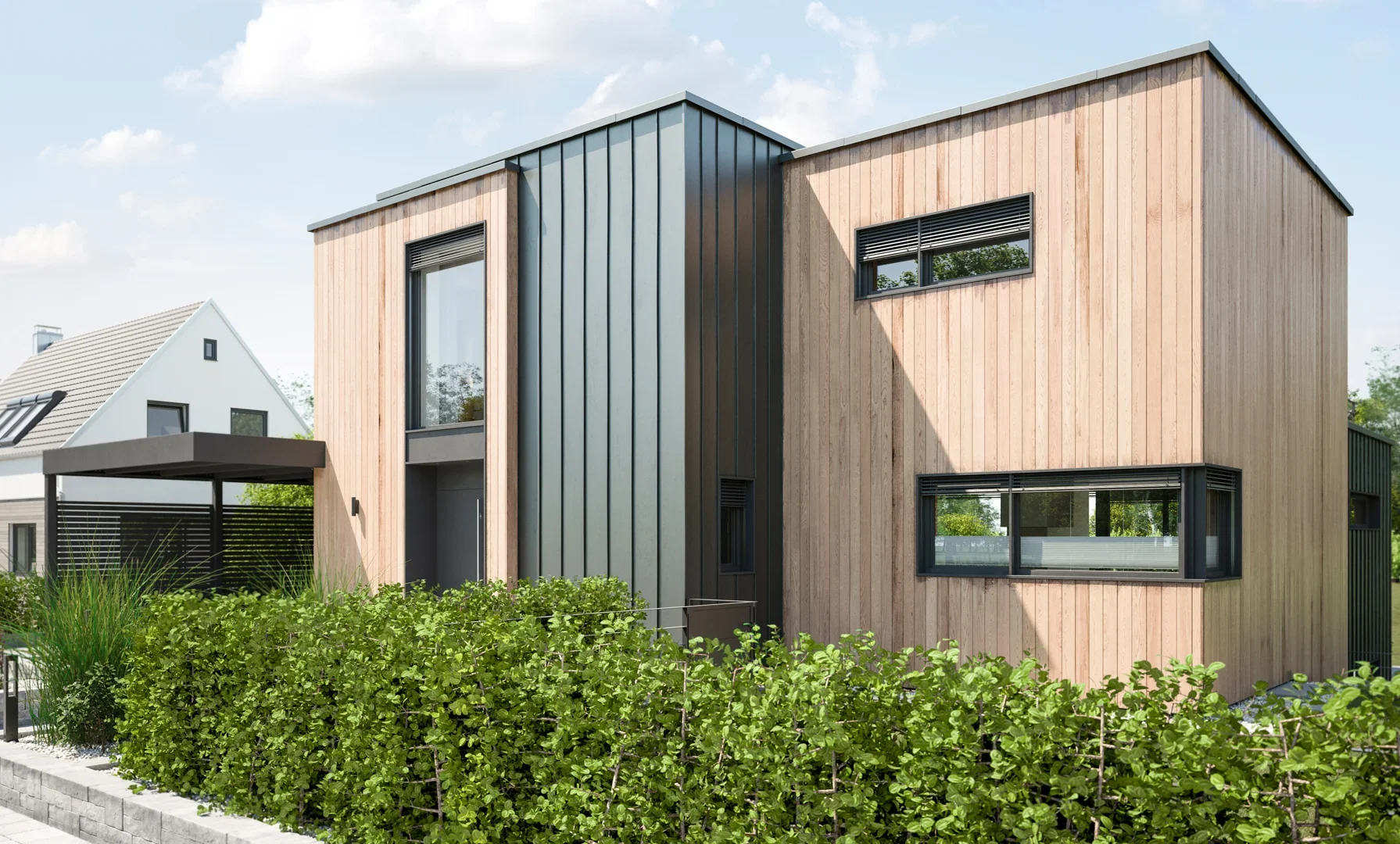The order could not be shipped.
The order was successfully shipped.

Smart home comparison:
Wireless vs. cable
A smart home automatically controls lighting, heating and blinds, saves energy and increases security. There are various control solutions, from room control to building control. It is important to choose between wireless and wired systems. We explain the differences and advantages and disadvantages of both systems. So that you can find the right system for you!
Wireless vs. cable
An overview of the technologies
Wireless solutions score highly in terms of flexibility and ease of installation, while cable systems impress with their reliability and security.
Important:
The decision between a wireless or wired solution should be made individually according to your needs and the circumstances of your particular living situation. With a specialist company at your side, you are always well advised.
Did you know ...

Did you know ...
...that Busch-Jaeger was a pioneer in the field of building system technology throughout Europe in 1981 with the ‘Busch-Timac X-10®’? This was the first step towards home automation. For the first time, lights and electrical appliances in the house could be switched and controlled by remote control via the existing power supply.
What are the advantages and disadvantages of wireless and cable?
Smart Home radio technology

Advantages
- Simple and flexible expansion of the system
- Ideal for renovation and retrofitting
- Cost-effective entry into the smart room solution
Disadvantages
- More susceptible to interference from other wireless networks, especially if no mesh network is used
- Limited number of participants
Smart Home bus technology (cable)

Advantages
-
Continuous, flawless communication between the participants
-
Ideal for new builds or core renovations
-
With solutions such as KNX, it is possible to work across different trades and manufacturers
Disadvantages
-
Higher installation costs
-
More limited flexibility
-
Programming often requires more effort
What is your budget?
- If your budget is tight, a radio-based solution with a limited range of functions can offer you an easy entry into the smart home world.
- If you are planning long-term ownership, you should consider a cable system. The high initial investment is amortised by the long service life of the installation.
Our tip for you:
It is advisable to obtain comprehensive information and compare different systems before deciding on a smart home system.
» Find the right specialist dealer in your area here.
Outlook: The future of the smart home
Current trends show that wireless standards are constantly evolving. This enables more stable and faster communication between devices. Artificial intelligence (AI) is also being integrated into smart homes. This makes automation more intelligent and the user experience more personalised. Another important trend is Matter. This is a new open communication standard for smart home devices from different manufacturers that promises better compatibility and security.
Long-term visions are moving towards smart homes that function like a learning system, adapting to the habits of the residents and predicting what will be needed next. The idea is that technology will be seamlessly integrated into everyday life so that it becomes invisible and simply works to make our daily lives easier. It's an exciting time for the development of Smart Homes 2.0.
Wireless standards explained simply
Busch-Jaeger offers you these solutions
Busch-flexTronics® Wireless

The wireless devices from Busch-flexTronics® Wireless fit into any flush-mounted box and are ideal for room control. They can either be used individually via Bluetooth or up to 32 devices can be networked with each other via the mesh network. The system can be easily integrated into the normal 230 V installation by the electrician as usual. The devices are configured and operated via smartphone or tablet using the Busch-free@home® Next app. Blind management, light control and motion detectors are interconnected and can be controlled individually or together.
Busch-free@home®

The wired Busch-free@home® system has a significantly lower threshold for entry into the smart home world than a KNX system, also in terms of costs for networked home technology. Innovative features such as voice control, remote access via app and geofencing round off the range of intuitive operation and smart technology. Wireless sensors can also be connected to the system centre, the System Access Point. The System Access Point is also compatible with Busch-flexTronics® Wireless.
Busch-Installationsbus® KNX

The globally standardised KNX system offers extensive possibilities for automation. As with Busch-free@home®, the basis for the networked home is the bus line, which is laid in addition to the conventional power line in a new building or renovation. In this way, the various KNX-capable elements of the building control system are networked with each other. Numerous functions can be controlled centrally. It is not just a matter of switching on and off, but scenes or automations can also be easily added.
